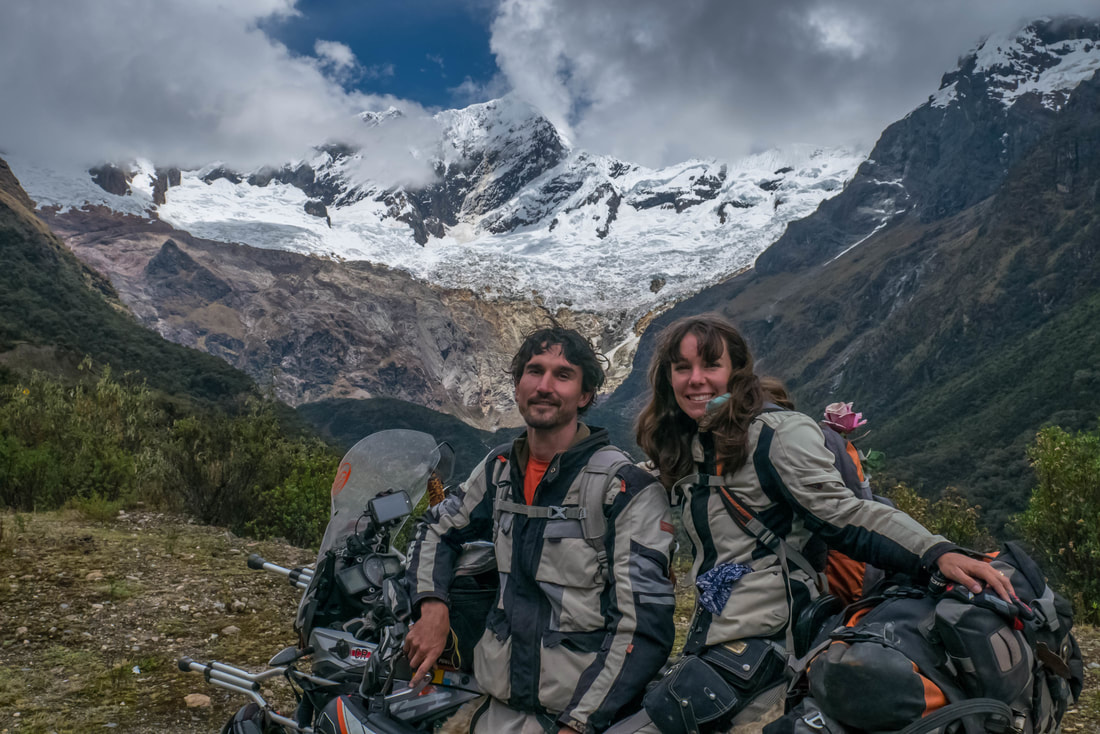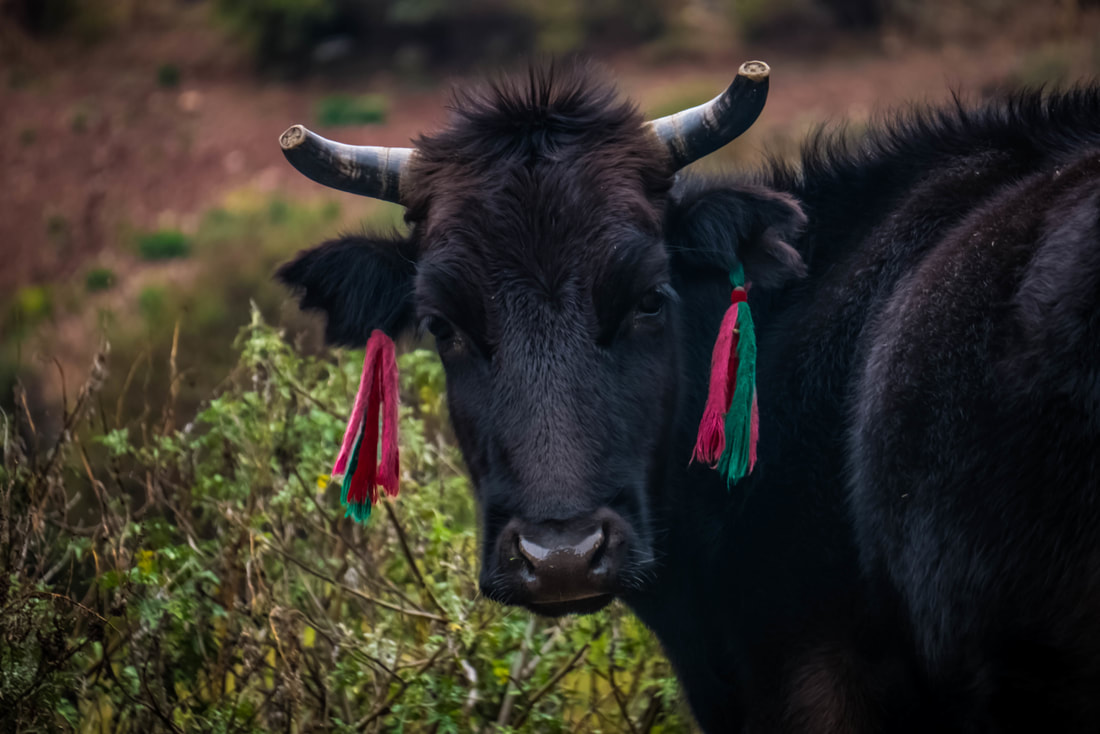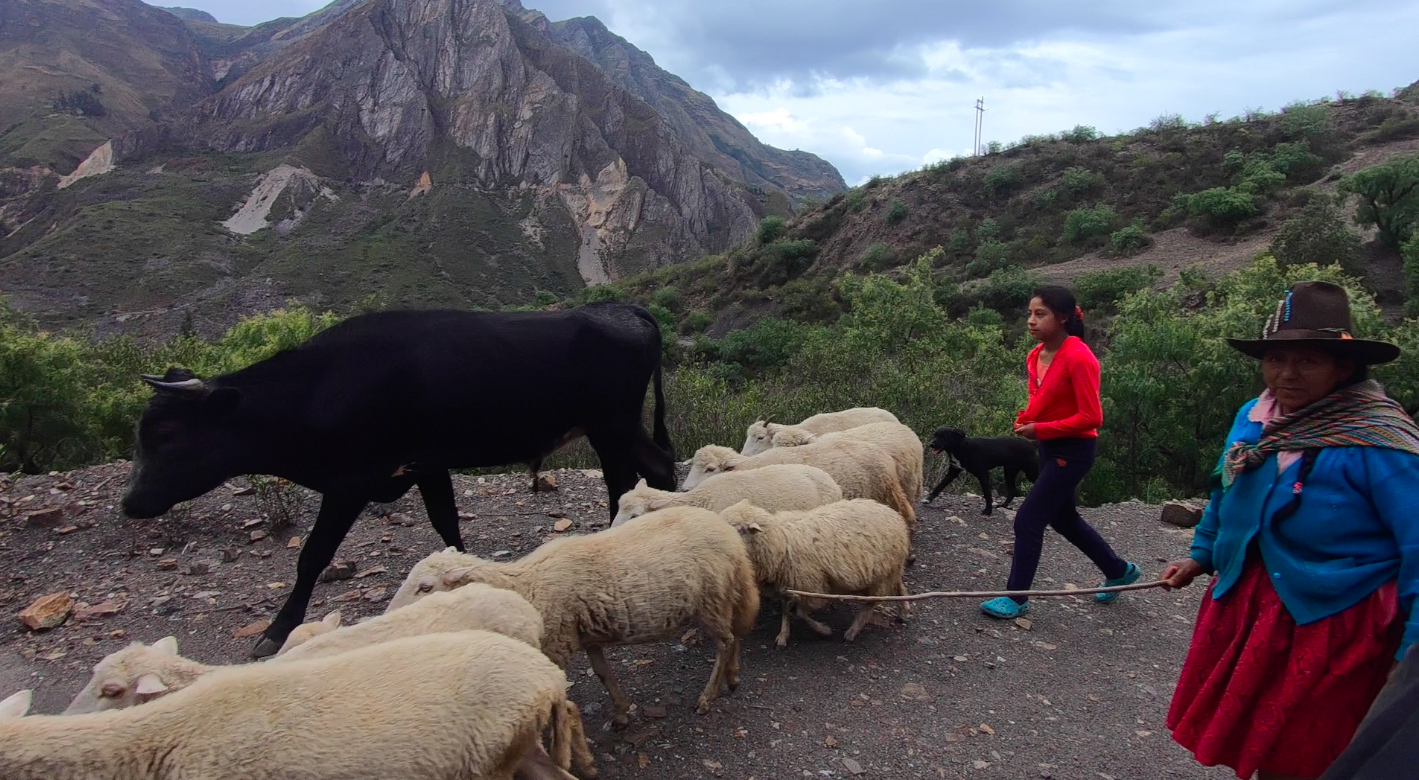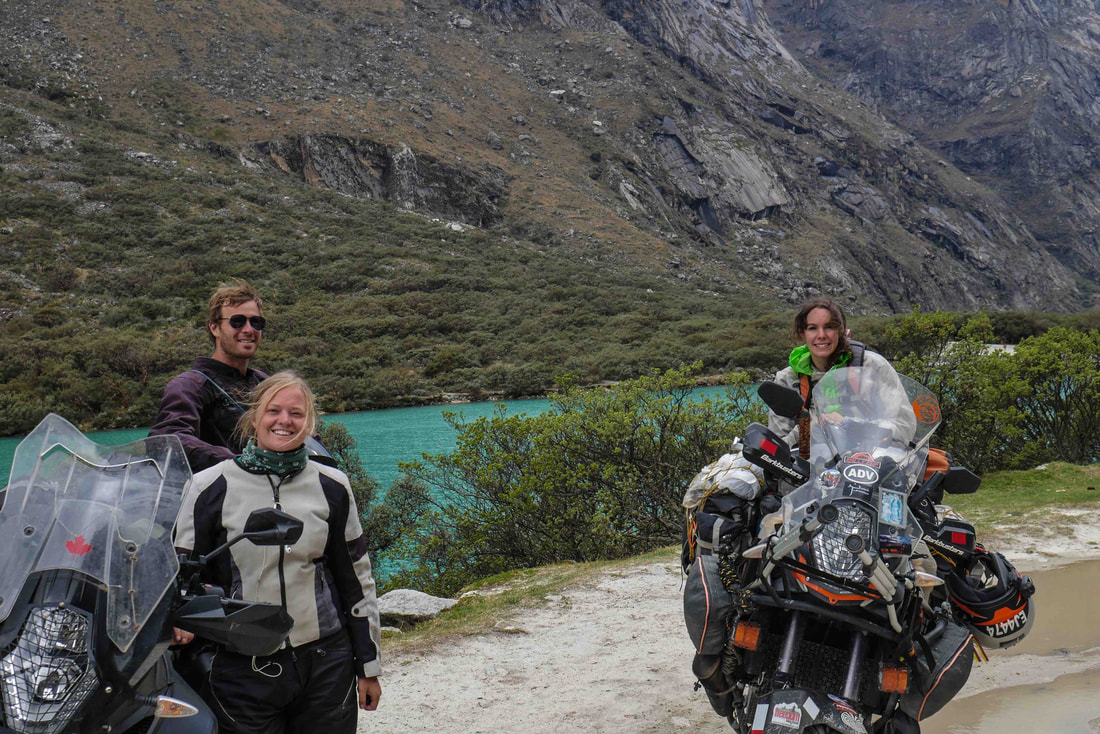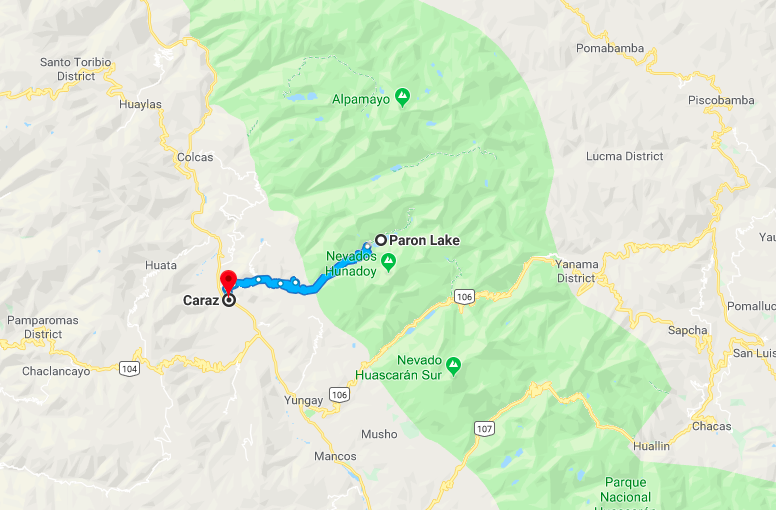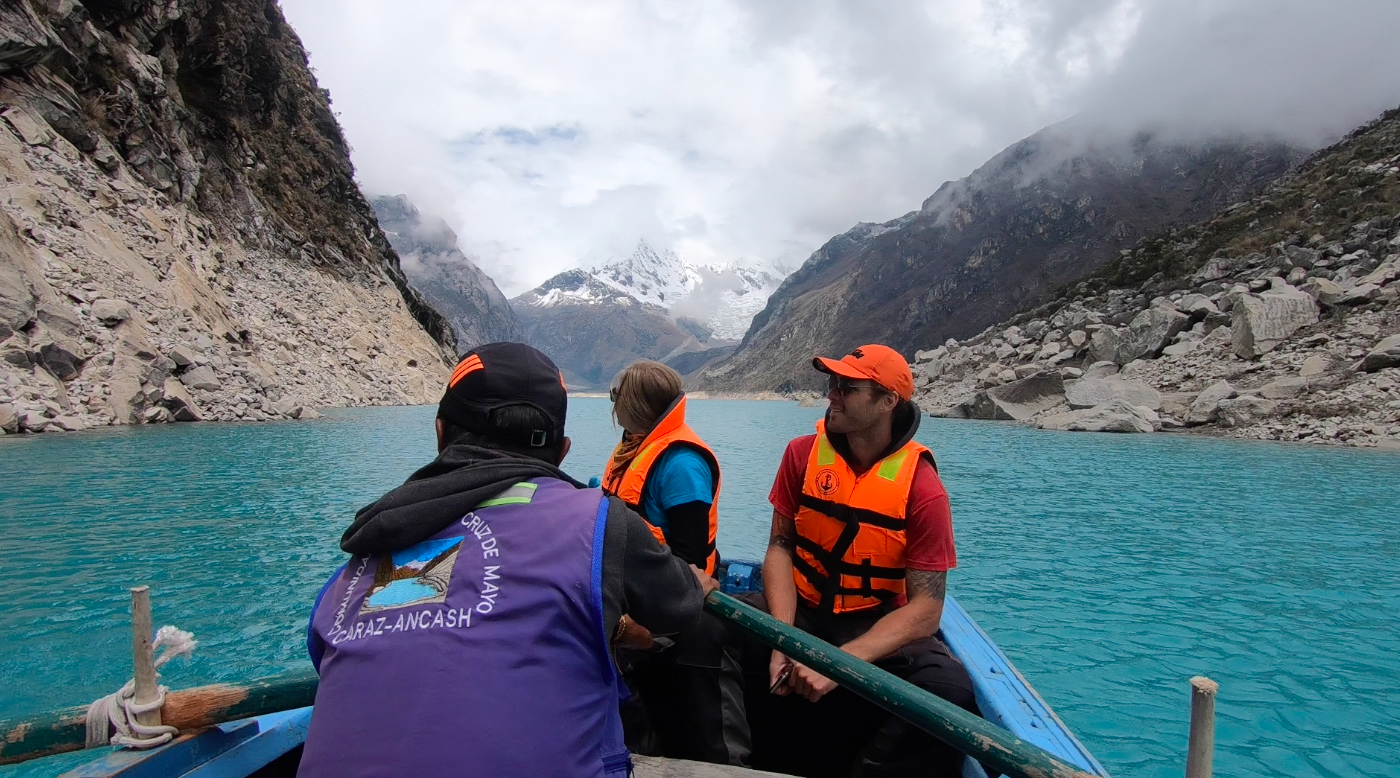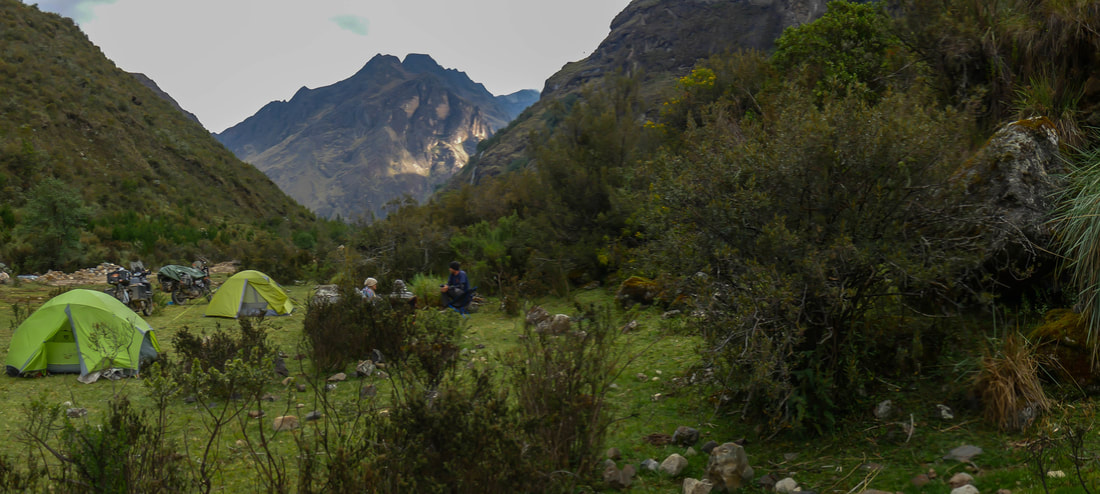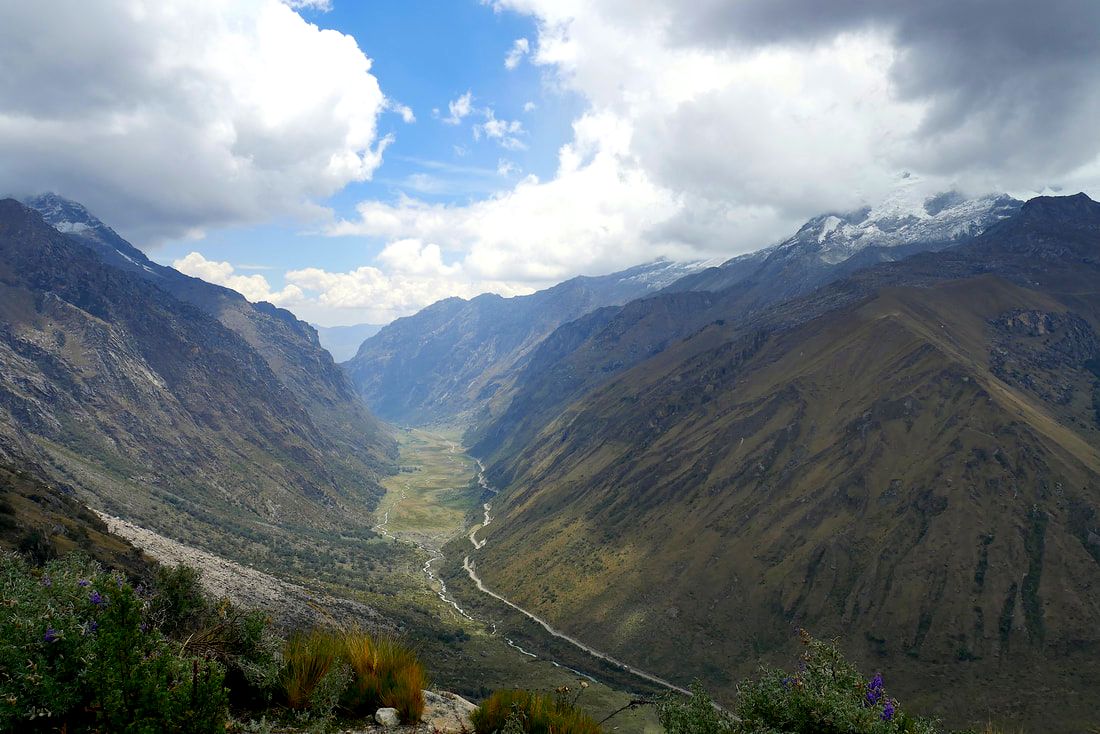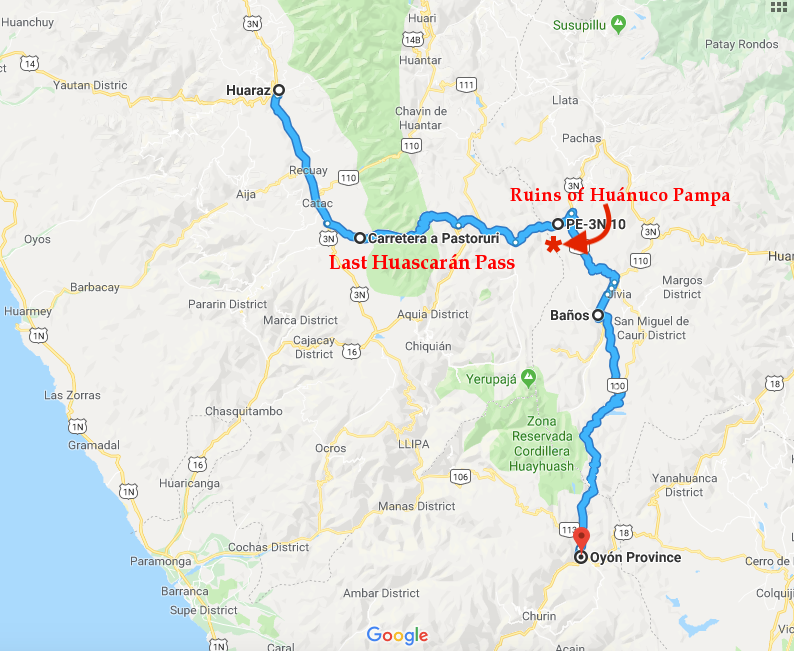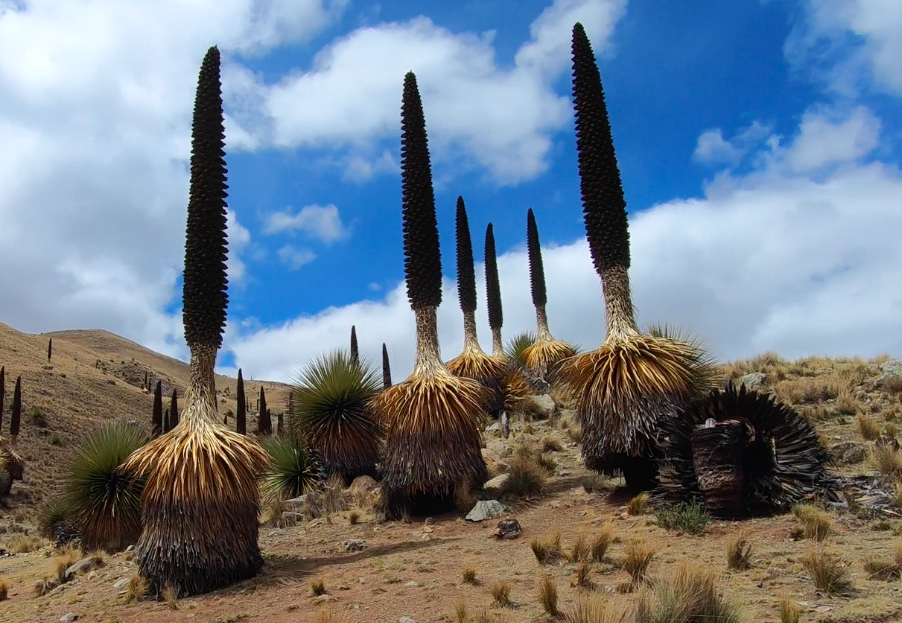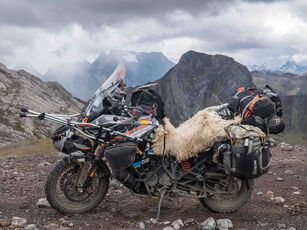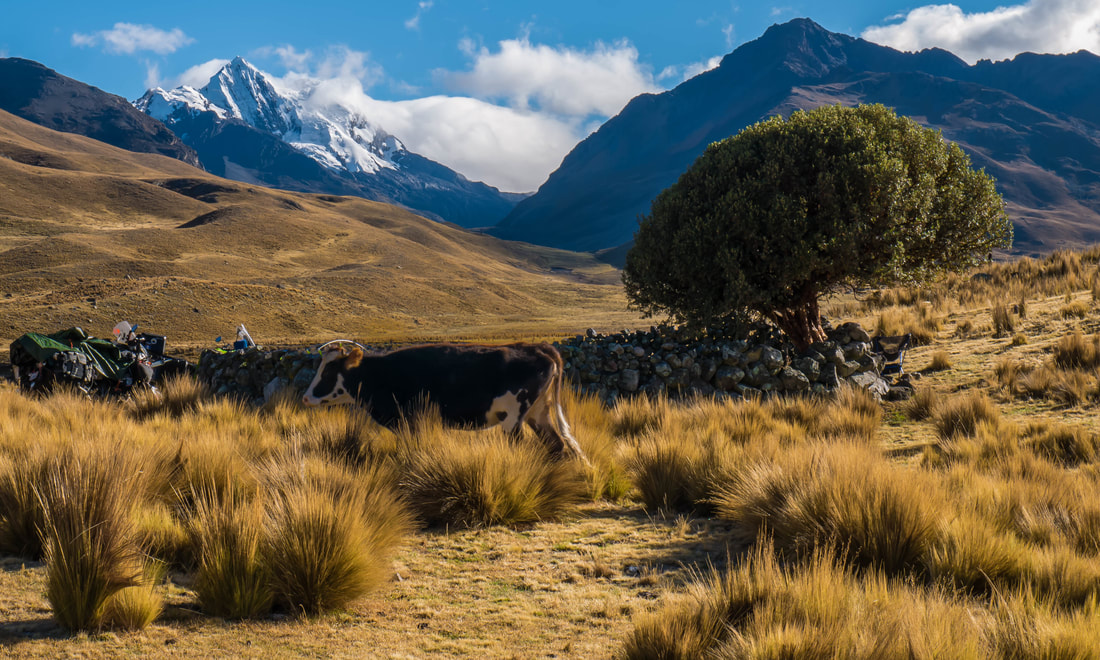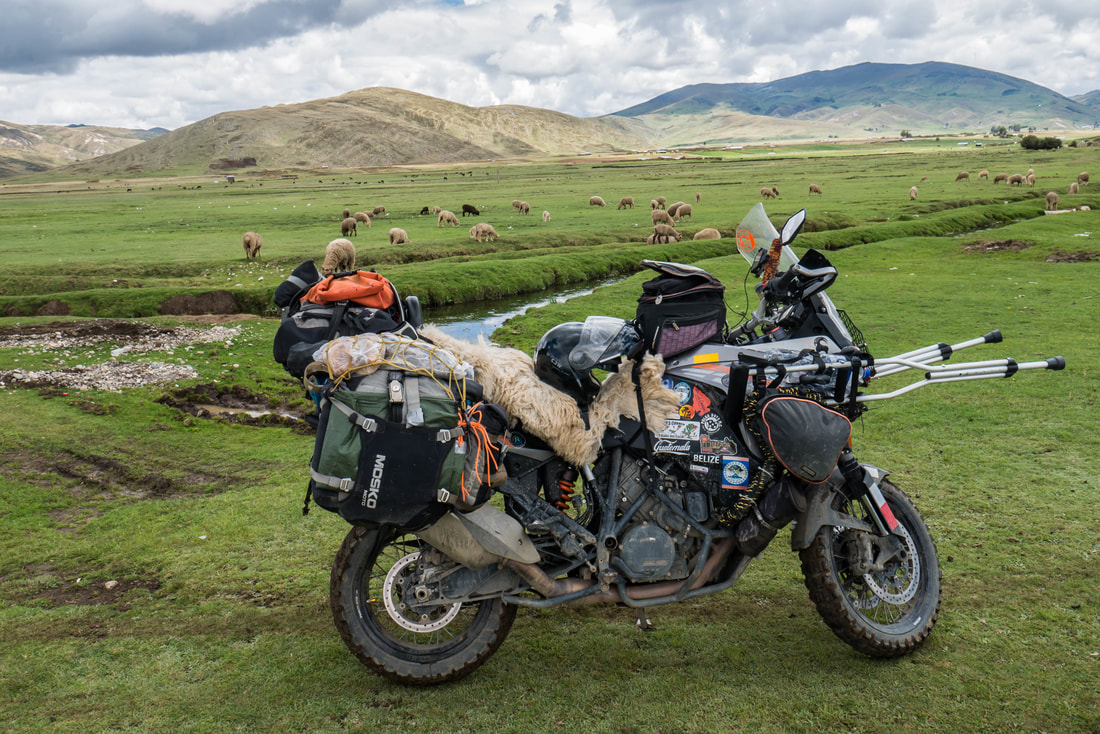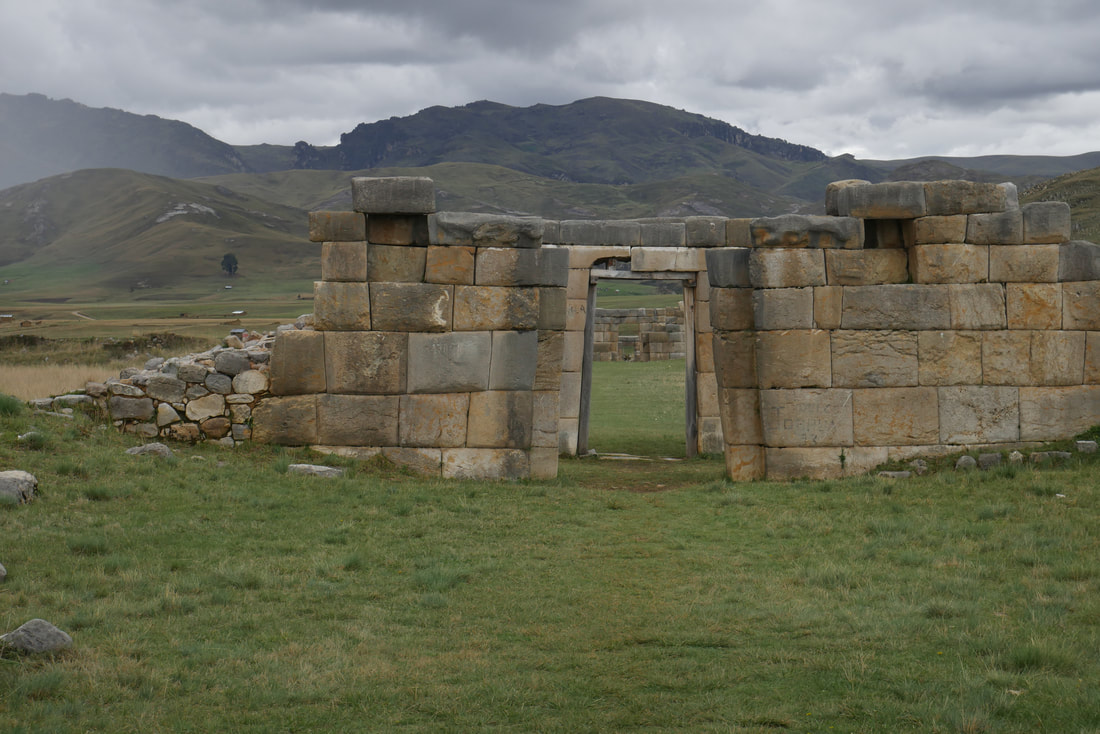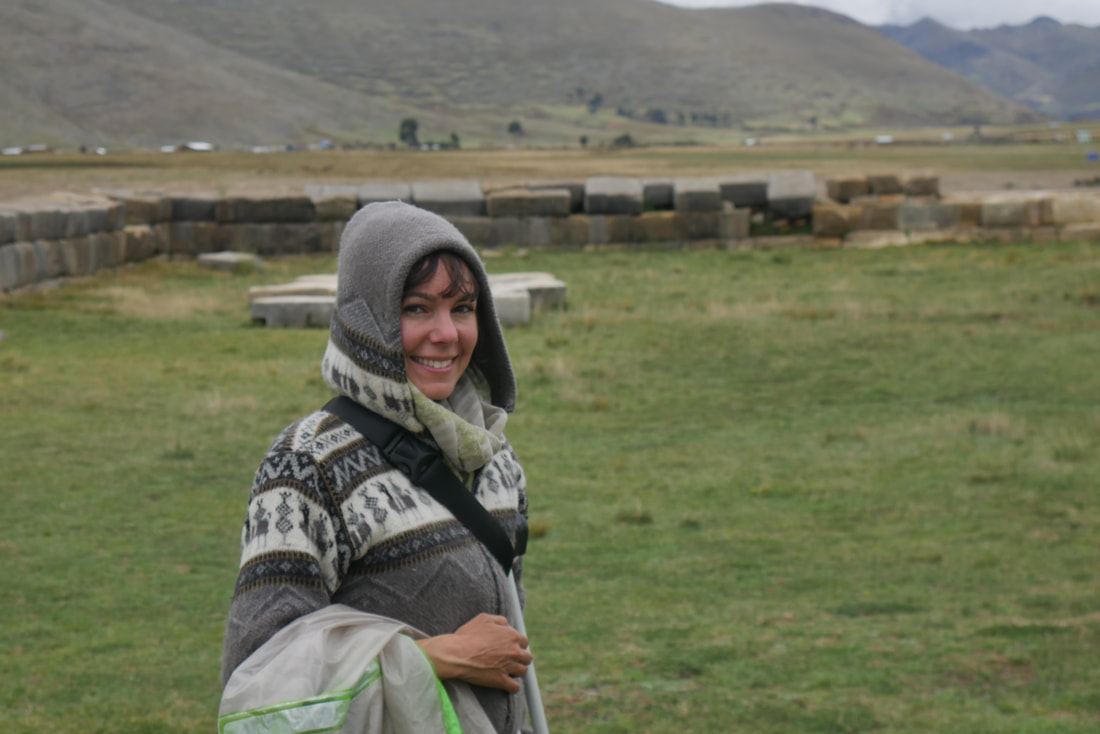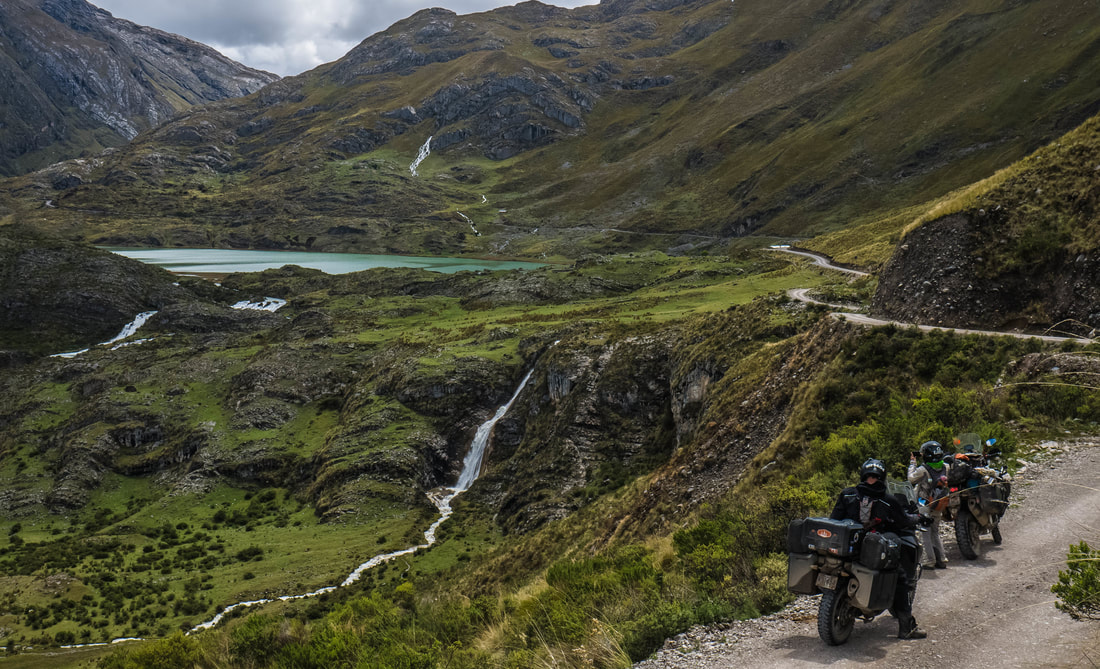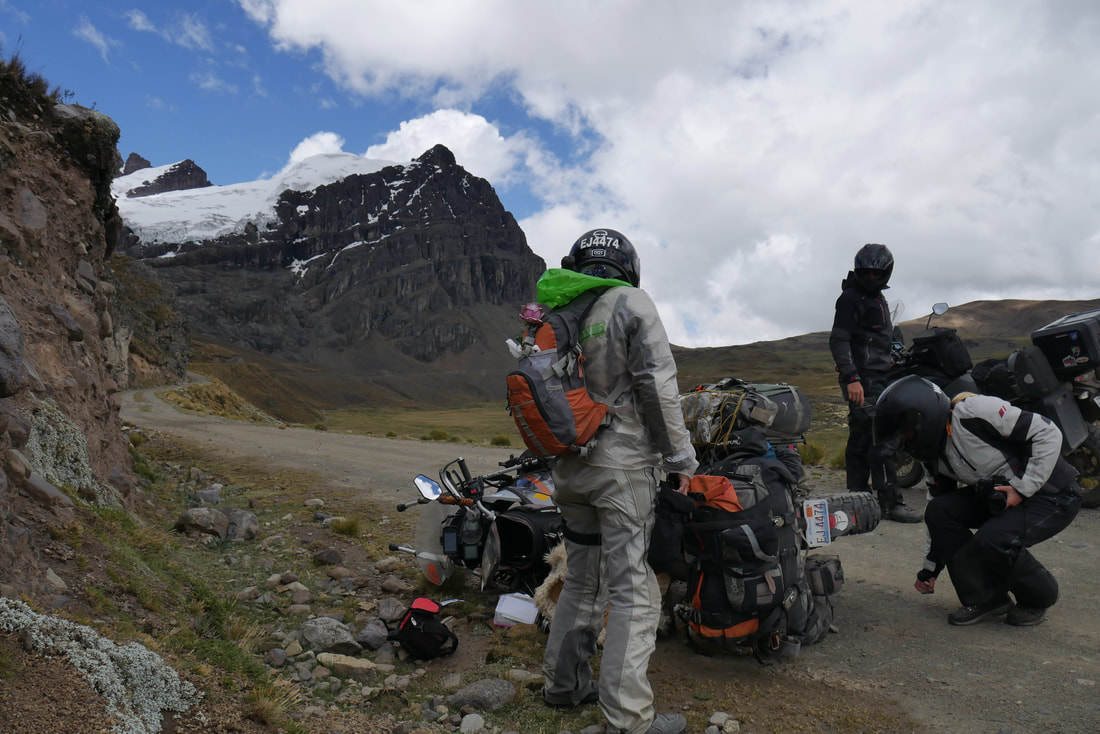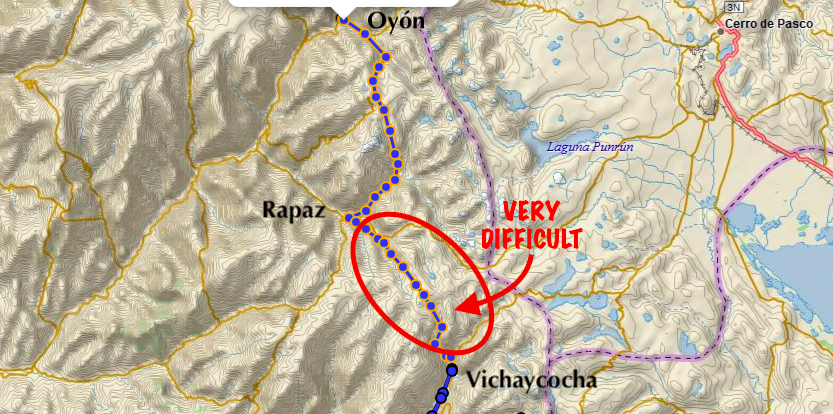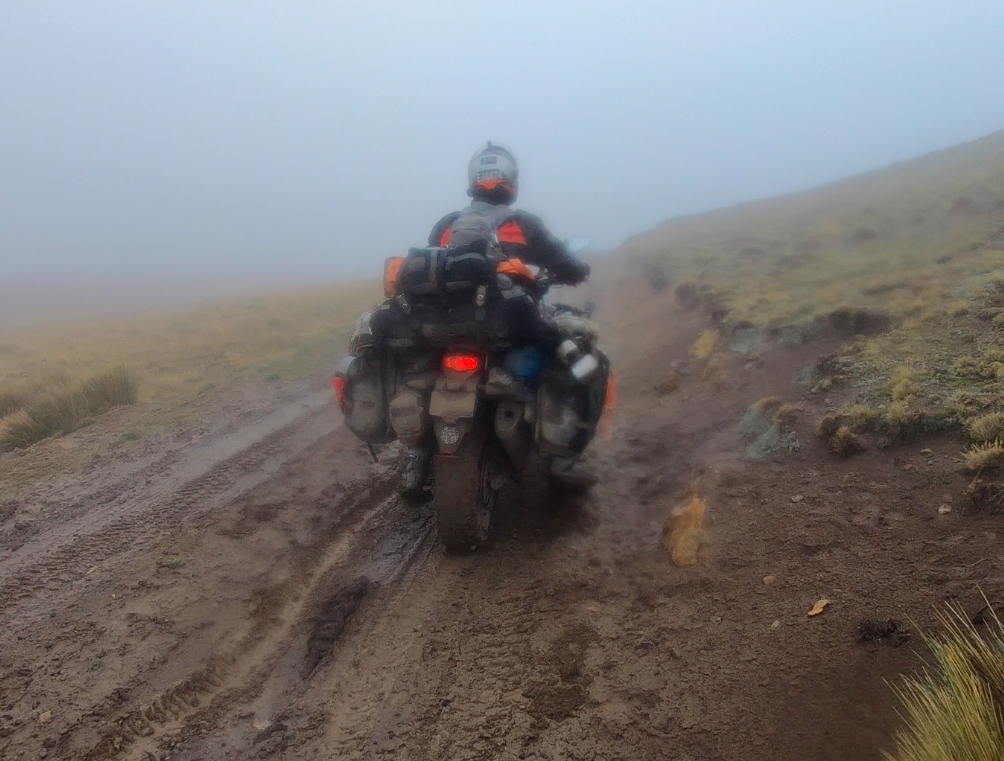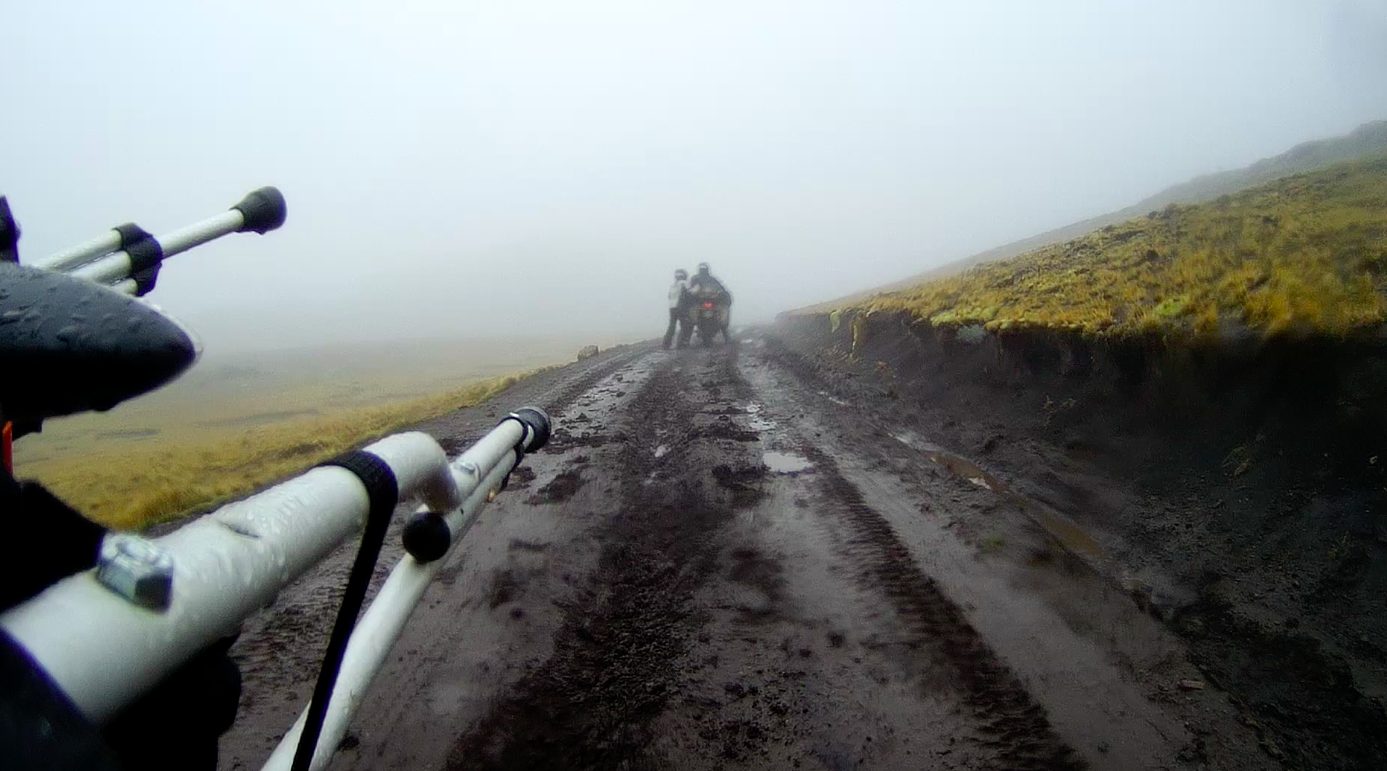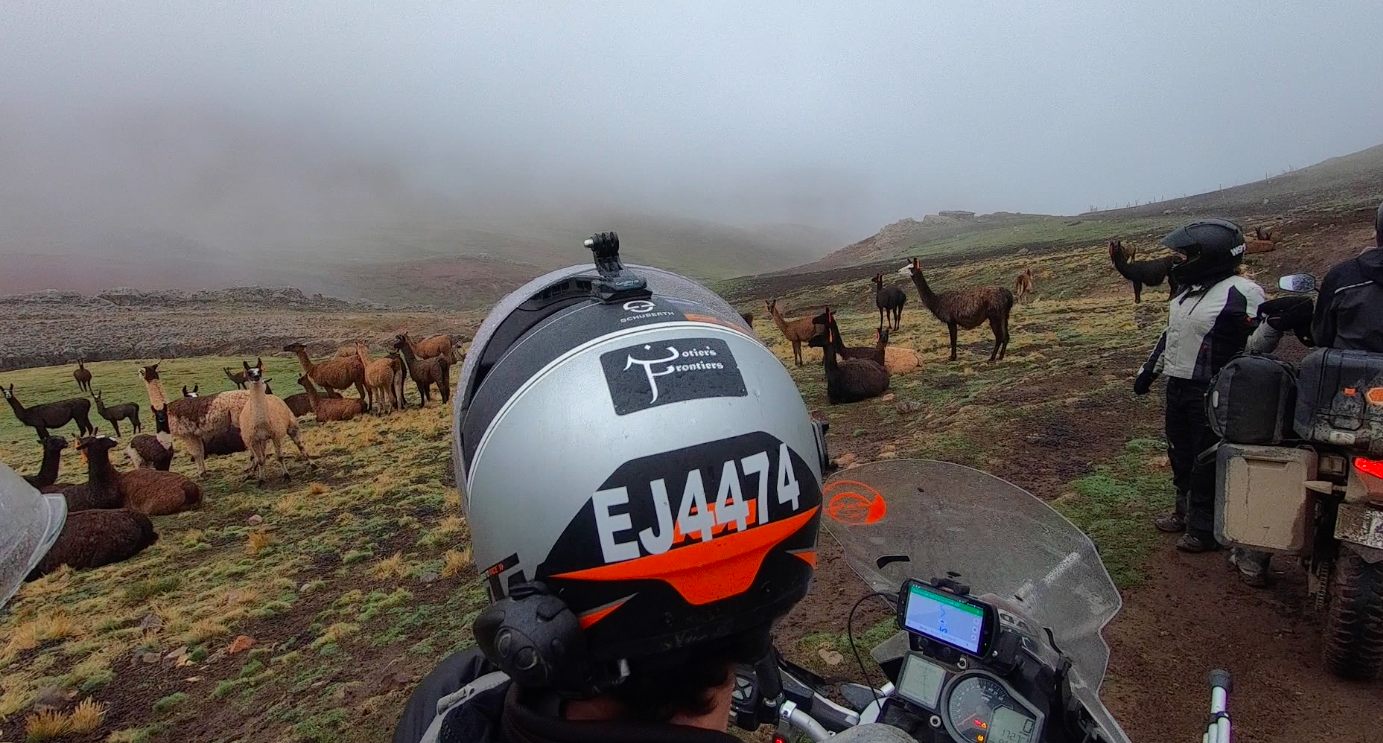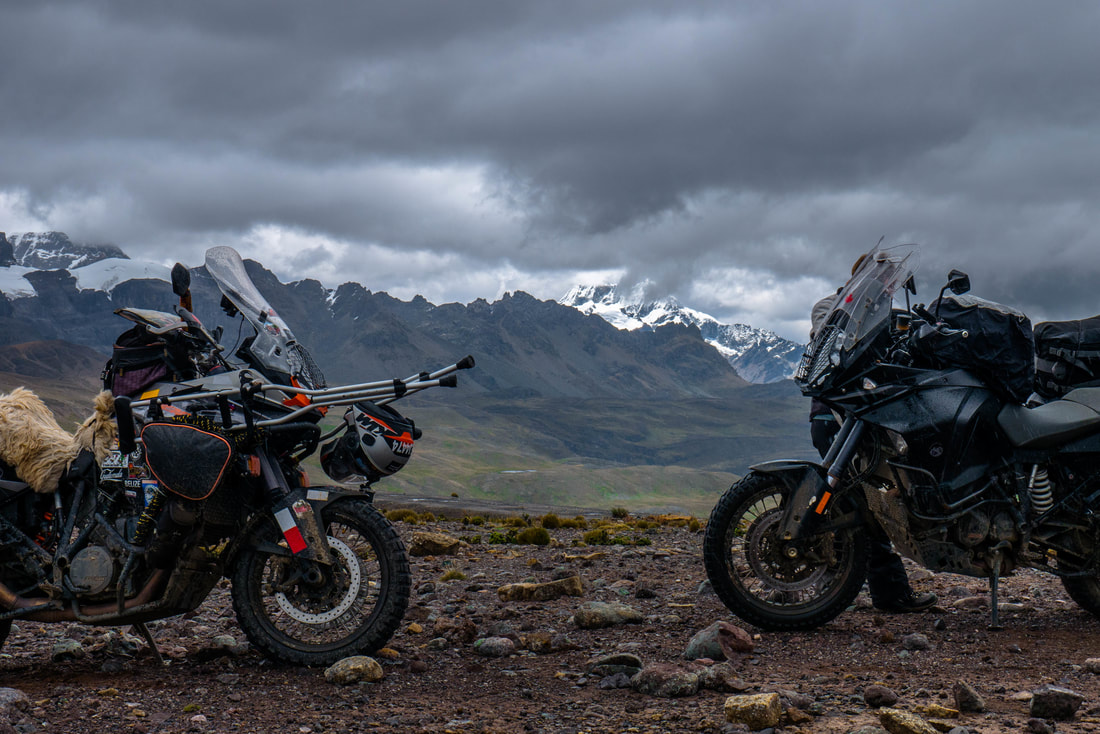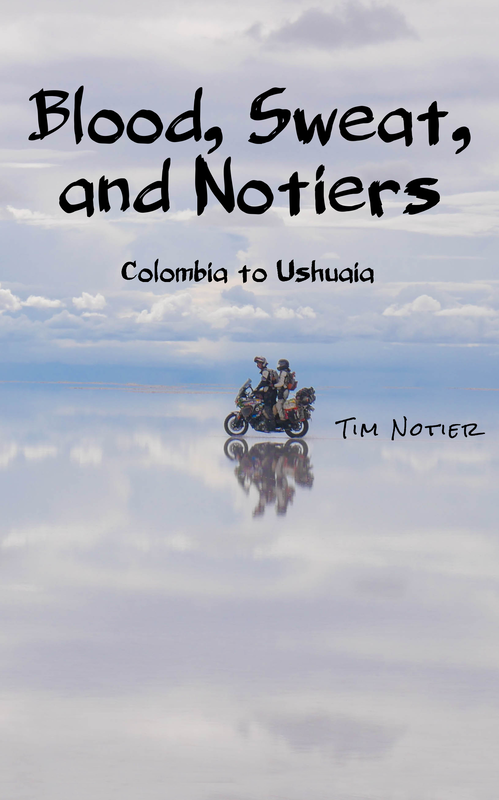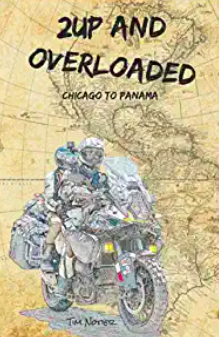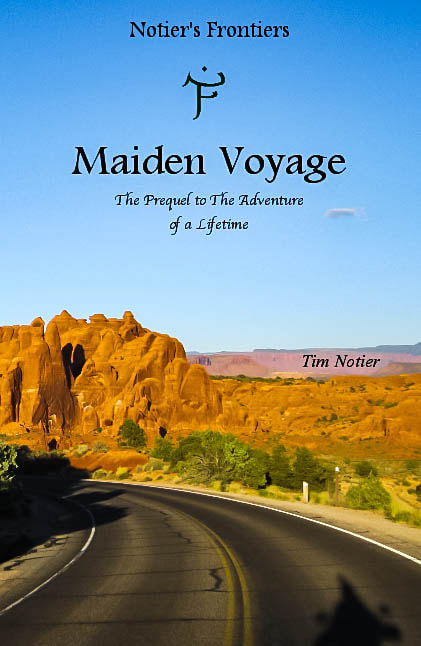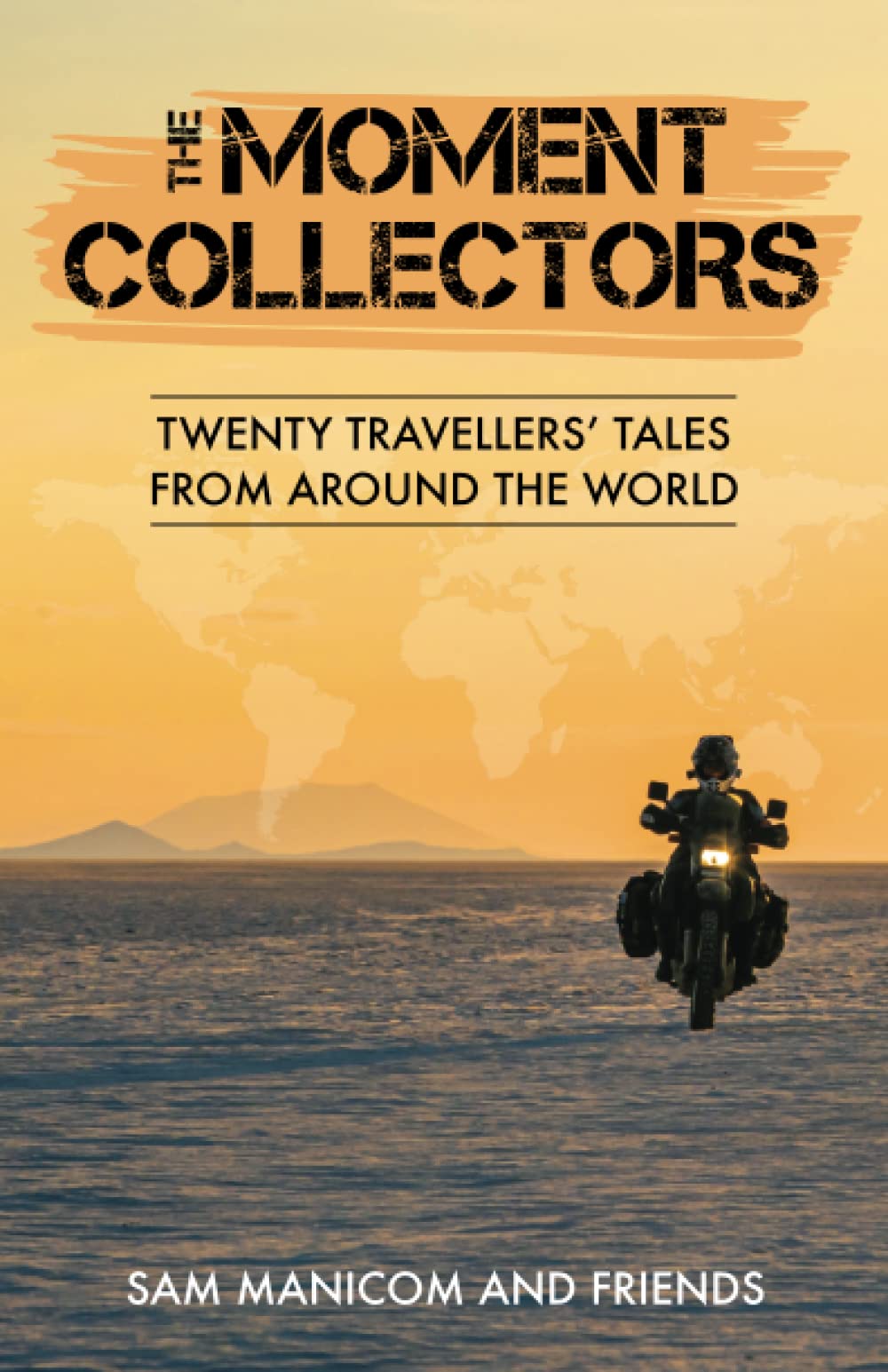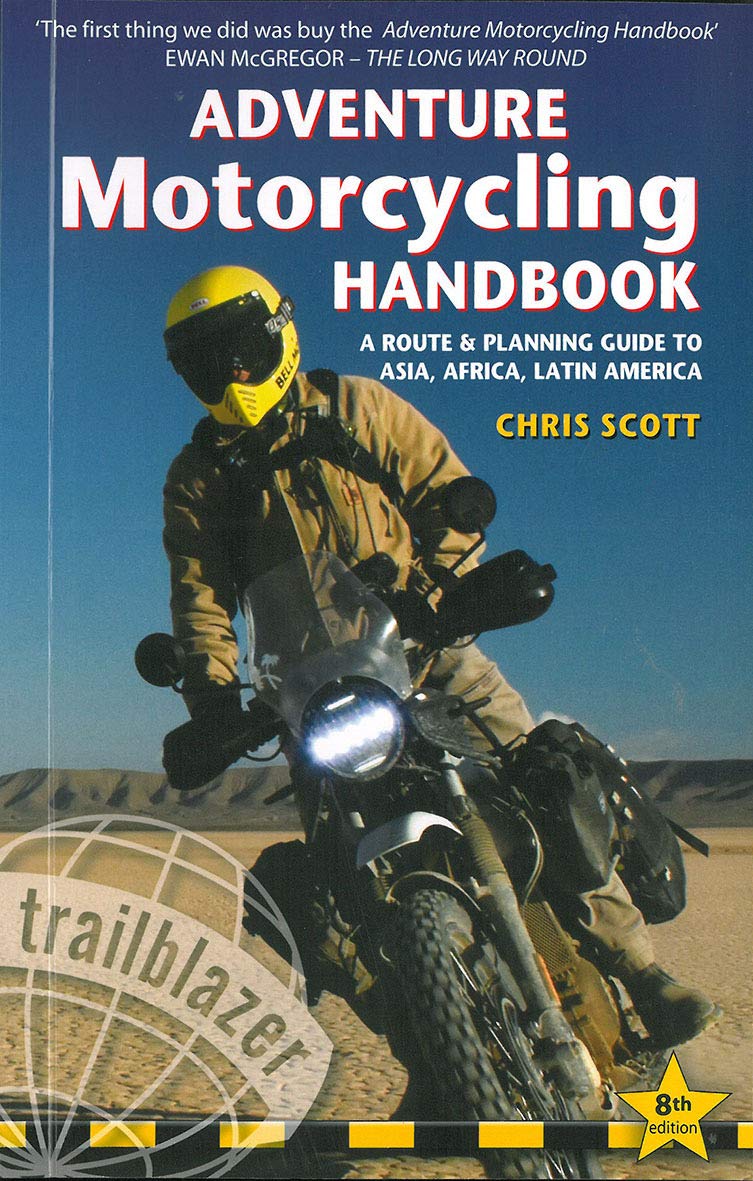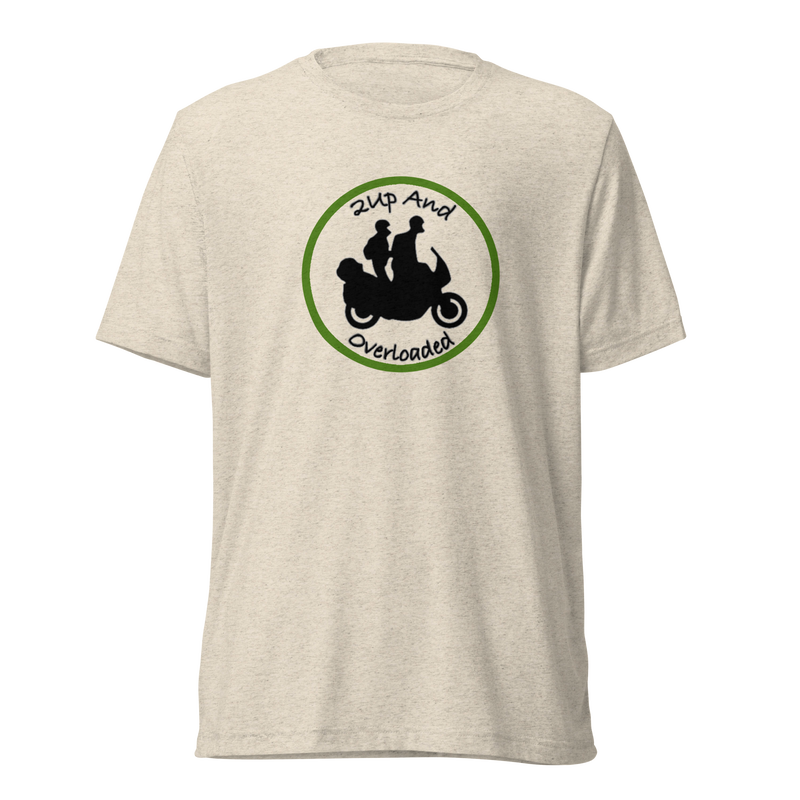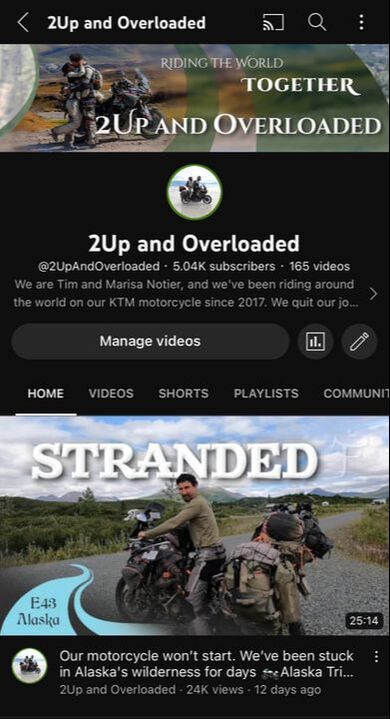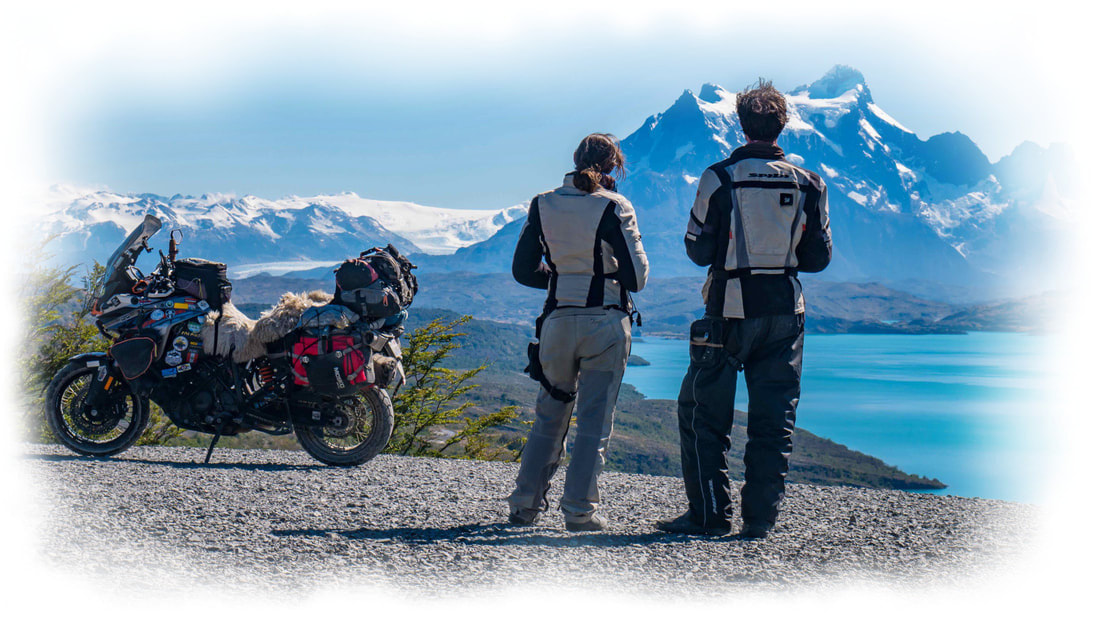By MarisaWhen it comes to Peru, the Inca steal the show. Machu Picchu, Cusco, and the Inca Trail are all things that usually come to mind when thinking of Peru. I certainly never pictured glacier-capped mountains and strikingly-blue alpine lakes tucked amidst them. But I do now. Only the local Peruvians who have been farming these high-altitude slopes for centuries, overlanders like ourselves, and the most adventurous of travelers ever delve into this region. It's called the Cordillera Blanca (meaning white mountain range), and has some of the highest mountain passes in the world. I now believe that anyone who comes to Peru just to go to Cusco and Machu Picchu is only seeing the face of Peru, the one in all the postcards and brochures. But they will be missing out on the heart of Peru, the one where it's only you and the llamas standing between stone ruins of long lost civilizations, and where red-cheeked babies peek out from the colorful swaddles on local women's backs. It's where white-washed peaks blend into the clouds and turquoise lakes dot the landscape. It's a region that felt like we were transported back a thousand years, to a time in Peru before the Spanish and before modernization, a place where I truly felt like Hiram Bingham discovering Machu Picchu for the first time, as if no foreigner had ever stepped foot there before. It's a land hidden in mist and snow and terrible roads that keep it separated from the rest of the world, isolated and proud. When it comes to Peruvian majesty, the Cordillera Blanca is truly the tip of the crown. Our adventures into the Cordillera Blanca started in Huaraz, the largest city of the region, where as you may remember, I was recuperating as my foot healed from an earlier spill. But after a couple weeks in Huaraz, the pain had subsided and I was hobbling around pretty well on crutches. And so with the two crutches strapped onto the front of the bike, we decided we were ready to continue with our journey, and luckily, we weren't going to tackle this isolated region alone. We were going to do it all with two fellow KTM riders: the Adventure Haks. We had been online stalking Brendon and Kira Hak for quite some time because they were a couple just like us riding south through the Americas on a KTM. We have a few slight differences: they're from Canada and we're from the US, and they have the newer model bike, the 1290 Super Adventure, whereas we have the 1190 Adventure. But we had a lot more in common than differences, and I just knew that we were going to hit it off great with them. They also have an incredible blog and stunning photos, oh and they can cook up gourmet feasts while camping, what's not to like? So after months of near misses, we finally were able to meet up, and the four of us made our first stop at the stunningly-blue lake of Laguna Paron. Situated between snowy peaks, this lake was a perfect introduction to the regal beauty of the Cordillera Blanca. Next, we knew we had to really get a taste for these mountains, and that meant going into Huascarán. As you can see in the following map, the green area is Huascarán National Park, named after its highest peak and the 16th century Incan Emperor, Huáscar. This park encompasses the majority of what is known as the Cordillera Blanca, and there are four passes, three of which we took. The first two are shown here: the northern pass which is not paved and more rugged, and the southern pass which is paved, pristine, and well-traveled. Though Google seems to think the entirely of this loop can be done in 8 hours and 10 minutes, in reality it took us five days, and each white circle is where we camped. But it was five glorious days of wild camping, telling stories around the campfire, and unforgettable views. Both passes are stunning and literally breath-taking since the northern road reaches an altitude of nearly 15,000 ft. (4,500 meters) and the southern road reaches over 15,000 ft. We kept our coca leaf tea handy for the mornings to help combat the inevitable headaches and stomach cramps that came from altitude sickness, as it took a few days before we acclimated. Once completing the passes, we took a break in the city of Huaraz to shower and get some more supplies. But soon we were off again, this time doing the most southern pass in the park, the last pass in Huascarán. It's not a very well-trodden route, but it turned out to be one of the most enjoyable and picturesque rides we've ever been on. Not only were there snow-capped mountains, but herds of sheep scrambled their way through pond-dotted bogs and marshlands that reflected all the blues of the sky. And then over the pass things became drier with windswept plains, thatched huts for shepherds, ancient petroglyphs on the cliff walls, and some of the strangest looking trees we've ever seen. Once reaching the eastern side of the pass, we camped in a grassy field filled with every type of grazing animal you could name, including alpaca. It was an ideal spot to stay the night since it was situated right next to an Incan ruin called Huánuco Pampa. Though I'd never heard of it before, this immense city of 47 acres (19 hectares) and over 4,000 buildings was an important Incan metropolis of commerce situated on the Pre-Hispanic highway between Cusco and Quito. I was deeply impressed with this city for the size of its structures, the fabulous stonework of mortar-less walls perfectly slanted upwards to withstand any earthquake, and the carvings of monkeys or lizards on the doorways. But even more than that, it was the feeling of the place, because we were truly alone in a deserted city that had once thrived, now left abandoned. It was an eerie and also exciting feeling, and I felt, once again, like I was the first explorer to ever set foot there. Having come to the end of Huascarán National Park, and on the Amazon side of the mountains, we knew we'd have to cross the Andes one more time to get back on the western side. And what better place to do so than at the next National Park: Huayhuash (pronounced “Why wash?", a question which Tim frequently ponders). Though there are no roads which go straight through the park, we were able to make our way alongside it, all within view of its stunning peaks. Plus, we were greeted with more crystal lakes and green valleys that looked like they should have been out of The Land Before Time. Sounds like pure bliss, right? Well, not all of our adventures went as planned. Three out of four of us came down with some sort of unpleasant stomach sickness (lucky you Brendon for avoiding it with your spicy food), and Tim and I dropped the bike, ummm, I'm not even going to tell you how many times. Amazingly, and much to our chagrin, the Haks did not even drop their bike once. And then there was that one day where we got ourselves into a spot that I thought we may never get out of. The first half of the day went fine, I would even call it glorious. We had mostly clear skies, stunning vistas, and a successful crossing of the highest pass we have been on to date: 16,375 ft. (4,991 meters)! By this point, we were very well-acclimated and didn't even noticed the lack of oxygen. The strange part is that the second half of the day after the town of Rapaz was supposed to be a breeze because we were to take something labeled as a “major road". Major roads in Peru, we have learned, can be something of a bewildering misnomer, but this one takes the cake for misnomers, because it was practically impassable. As the afternoon fog set in, we started going up and up, starting at 12,000 ft. mind you. And because we were unable to see much, and we had just finished a huge pass, I kept thinking after an hour of ascending switchbacks, “How is it possible that we're still going up? Will this ever end?" As you can imagine, the weather did not improve as we hit over 14,000 ft. and the fog turned into a rain that seemed to have formed at the beginning of time and had never stopped. Everything was just sludge, and we saw no one else on the road, which should have been a warning sign. Well, except there was that one man who had hiked up to get his pregnant cow. Oh, and the guy in the Hummer out for a muddy joy ride who nearly hit the Haks and then actually hit us (he was a jerk, is there a rule about that and Hummers?). But even the Hummer guy warned us not to go any farther, giving us the tell-tale sign of death as he signaled with his finger to cut his throat. Unfortunately, we did not have enough gas to go back for hours down the sloshy mud pit of a road that we had come from. So onwards we went. The Hummer guy was right. Things got so nasty, Kira and I were pushing the bikes through the soupy mess as the boys did their best to make the tires grip onto anything and keep the bike upright. But it was slow going, hard breathing at that altitude, and night was coming on fast. So we figured we would continue pushing on (literally) until it was too dark to do so or we were too exhausted, and then we'd have to make camp and try again in the morning. Luckily, we did not have to camp there, and eventually passed the worst of the muck. We were even greeted with a lovely herd of llamas that glared at us like they had never seen people on motorcycles before. Who knows, maybe they hadn't. The next sign of civilization came like a Christmas village of orange lights softly burning through the night fog, and we were ecstatic to find a hotel/restaurant as one of the first buildings. It had no running water, which made for a particularly disgusting toilet, but we weren't complaining. It was a roof over our heads and we were just glad to be out of that mud. We all agreed that it was time to take a little break from our adventuring and do some laundry, buy some supplies, and get bike repairs/bike washing done. So we all headed to Lima, Peru's capital, and are here now getting rested and caught up with our blogs (sorry for the wait, rural Peru is not known for its internet). The Adventure Haks have certainly lived up to their name, and it's sad that we may be parting ways now (though not forever, we will definitely be meeting up again along the road). But it's been some of the most memorable sights and experiences from the past two weeks, and I would highly recommend to anyone interested in coming to Peru to rent a vehicle (get full insurance, you'll need it) and come to the white heart of the Cordillera Blanca where you will see a side of this country that is majestic, breath-taking, and truly authentic. And you will have an adventure that you'll remember for the rest of your life. We certainly did. What's next? The famous Incan ruins around Cusco, and of course, Machu Picchu... we'll keep you posted. The gear we trust: |
Follow UsRide with us from Chicago to Panama!
2Up and Overloaded Get inspired by the tale that started it all:
Maiden Voyage 20 author's tales of exploring the world!
The Moment Collectors Help us get 40 miles further down the road with a gallon of gas!
Become a Patron for early access to our YouTube Videos!
Subscribe to our YouTube Channel!
Subscribe to our Blog by Email
|
2Up and Overloaded
Join our clan of like-minded adventurers...
Proudly powered by Weebly
Designed by Marisa Notier

